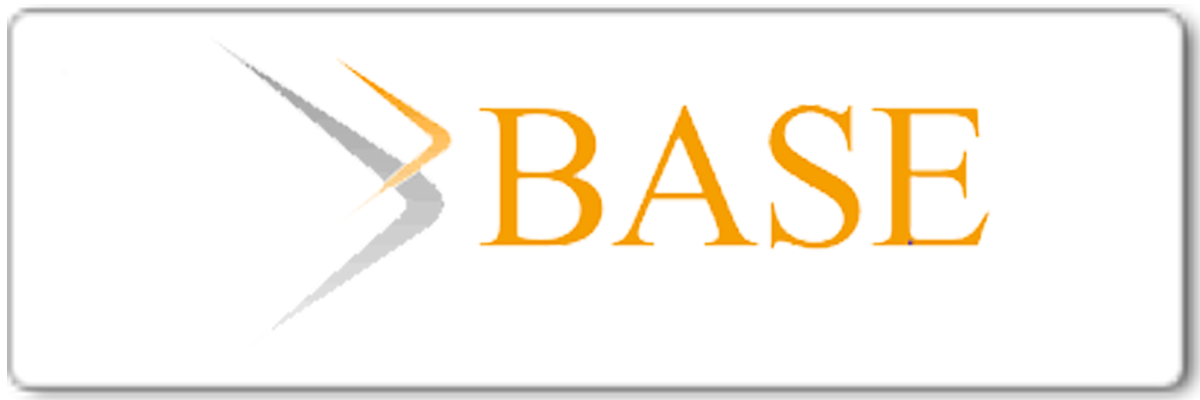Synthesis of the 21st Century Skills (4C) Based Physics Education Research In Indonesia
Abstract
Keywords
Full Text:
PDF (English)References
Care, E., Kim, H., Vista, A., & Anderson, K. (2018). Education System Alignment for 21st Century Skills: Focus on Assessment. Center for Universal Education at The Brookings Institution.
Wijaya, E. Y., Sudjimat, D. A., Nyoto, A., & Malang, U. N. (2016). Transformasi pendidikan abad 21 sebagai tuntutan pengembangan sumber daya manusia di era global. In Prosiding Seminar Nasional Pendidikan Matematika (Vol. 1, No. 26, pp. 263-278).
Khoiriah, M., & Kholiq, A. (2020). Validitas perangkat pembelajaran fisika berbantuan e-book literasi sains pada materi fluida dinamis. Inovasi Pendidikan Fisika, 9(1): 779-783.
Redhana, I. W. (2019). Mengembangkan keterampilan abad ke-21 dalam pembelajaran kimia. Jurnal Inovasi Pendidikan Kimia, 13(1).
Sutiadi, A., & Nurwijayaningsih, H. (2016). Konstruksi dan Profil Problem Solving Skill Siswa SMP dalam Materi Pesawat Sederhana. Jurnal Penelitian & Pengembangan Pendidikan Fisika, 2(1): 37-42.
Kivunja, C. (2015). Exploring the Pedagogical Meaning and Implications of the 4Cs “Super Skills” for the 21 st Century through Bruner’s 5E Lenses of Knowledge Construction to Improve Pedagogies of the New Learning Paradigm. Creative Education, 6(02): 224-239.
Venisari, R., Gunawan, G., & Sutrio, S. (2017). Penerapan Metode Mind Mapping pada Model Direct Instruction untuk Meningkatkan Kemampuan Pemecahan Masalah Fisika Siswa SMPN 16 Mataram. Jurnal Pendidikan Fisika dan Teknologi, 1(3): 193-199.
Wulandari, A. Y. P., Tawil, M., & Amin, B. D. (2015). Penerapan pembelajaran fisika berbasis hands on activities untuk meningkatkan kemampuan berpikir kritis siswa kelas X MAN 2 model makassar. Jurnal Pendidikan Fisika, 3(2): 105-115.
Mustofa, M. H., & Rusdiana, D. (2016). Profil kemampuan pemecahan masalah siswa pada pembelajaran gerak lurus. Jurnal Penelitian & Pengembangan Pendidikan Fisika, 2(2): 15-22.
Agustina, K., Sahidu, H., & Gunada, I. (2020). Pengaruh model pembelajaran inkuiri terbimbing berbantuan media phet terhadap kemampuan pemecahan masalah dan berpikir kritis fisika peserta didik sma. Jurnal Pendidikan Fisika dan Teknologi, 6(1): 17-23.
Wardani, I. K. (2016). Pengaruh Pemahaman Konsep Matematika Vektor Mahasiswa FMIPA UNIPDU Terhadap Kemampuan Pemecahan Masalah Fisika Mekanika. PEDAGOGIA: Jurnal Pendidikan, 5(2): 215-224.
Zunanda, M., & Sinulingga, K. (2015). Pengaruh Model Pembelajaran Berbasis Masalah dan Kemampuan Berpikir Kritis Terhadap Keterampilan Pemecahan Masalah Fisika Siswa SMK. Jurnal Pendidikan Fisika, 4(1): 63-70.
Usmeldi, U., Amini, R., & Trisna, S. (2017). The development of research-based learning model with science, environment, technology, and society approaches to improve critical thinking of students. Jurnal Pendidikan IPA Indonesia, 6(2): 318-325.
Sukarjita, I. W. (2020). Learning Community Dalam Perkuliahan Untuk Membangun Kemampuan Berpikir Kreatif Mahasiswa. LENSA (Lentera Sains): Jurnal Pendidikan IPA, 10(1): 11-24.
Kosim, K., Hikmawati, H., & Mahrus, M. (2019). Analisis Kemampuan Kreativitas Mahasiswa Fisika Fkip Unram Dengan Berbantuan Multireprensentasi Design Tes Dalam Penguasaan Materi Gelombang Dan Optik. Jurnal Penelitian Pendidikan IPA (JPPIPA), 5(1): 78-82.
Trianggono, M. M., & Yuanita, S. (2018). Karakteristik keterampilan berpikir kreatif dalam pemecahan masalah fisika berdasarkan gender. Jurnal Pendidikan Fisika dan Keilmuan (JPFK), 4(2): 98-106.
Lusiyana, A., Rohim, S., & Rohman, F. (2017). Pengaruh Pendekatan Open-Ended untuk Meningkatkan Kemampuan Berpikir Kreatif Siswa pada Mata Pelajaran Fisika Berbasis Perangkat Lunak Modellus. JIPFRI (Jurnal Inovasi Pendidikan Fisika Dan Riset Ilmiah), 1(2): 65-74.
Siahaan, P., Dewi, E., & Suhendi, E. (2020). Introduction, Connection, Application, Reflection, and Extension (ICARE) learning model: The impact on students’ collaboration and communication skills. Jurnal Ilmiah Pendidikan Fisika Al-Biruni, 9(1): 109-119.
Hermawan, H., Siahaan, P., Suhendi, E., Kaniawati, I., Samsudin, A., Setyadin, A. H., & Hidayat, S. R. (2017). Desain Instrumen Rubrik Kemampuan Berkolaborasi Siswa SMP dalam Materi Pemantulan Cahaya. Jurnal Penelitian & Pengembangan Pendidikan Fisika, 3(2): 167-174.
Munafifah, E. (2017). Pembelajaran Think Pair Share dengan Kesimpulan Learning Song Sebagai Upaya Meningkatkan Kemampuan Berpikir dan Berkomunikasi serta Membuat Suasana Menyenangkan Siswa MTsN Blitar pada Pokok Bahasan Suhu. Jurnal Penelitian Pendidikan IPA, 1(1): 27-32.
Oktasari, D., Jumadi, J., Warsono, W., Hariadi, M. H., & Syari, E. L. (2019). 3D Page-flipped worksheet on impulse-momentum to develop students' scientific communication skills. Jurnal Pendidikan IPA Indonesia, 8(2): 211-219.
Mulyadi, M. (2011). Penelitian kuantitatif dan kualitatif serta pemikiran dasar menggabungkannya. Jurnal studi komunikasi dan media, 15(1): 128-137.
Maguna, A., Darsikin, D., & Pasaribu, M. (2017). Kemampuan Berpikir Kritis Mahasiswa Calon Guru Pada Materi Kelistrikan (Studi Deskriptif pada Mahasiswa Program Studi Pendidikan Fisika Universitas Tadulako Tahun Angkatan 2014). JPFT (Jurnal Pendidikan Fisika Tadulako Online), 4(3): 42-51.
Marnita, M., & Ernawati, E. (2017). The Use of Interactive Multimedia (Macromedia Flash) to Increase Creative Thinking Ability of Students in Basic Physics Subject. Jurnal Pendidikan Fisika Indonesia, 13(2): 71-78.
DOI: http://dx.doi.org/10.26737/jipf.v6i1.1889
Refbacks
- There are currently no refbacks.
Copyright (c) 2021 Zul Hidayatullah, Insih Wilujeng, Nurhasanah Nurhasanah, Theofilus Gratiamus Gusemanto, Muh. Makhrus

This work is licensed under a Creative Commons Attribution-NonCommercial 4.0 International License.
Publisher
Institute of Managing and Publishing of Scientific Journals
STKIP Singkawang
Jl. STKIP, Kelurahan Naram, Kecamatan Singkawang Utara, Kota Singkawang, Kalimantan Barat, Indonesia
Website: http://journal.stkipsingkawang.ac.id/index.php/JIPF
Email: [email protected]
JIPF Indexed by:
Copyright (c) JIPF (Jurnal Ilmu Pendidikan Fisika)
ISSN 2477-8451 (Online) and ISSN 2477-5959 (Print)































